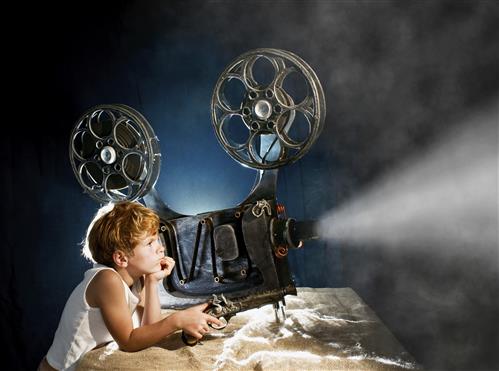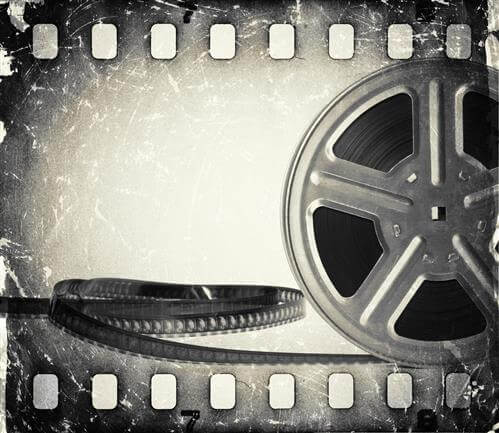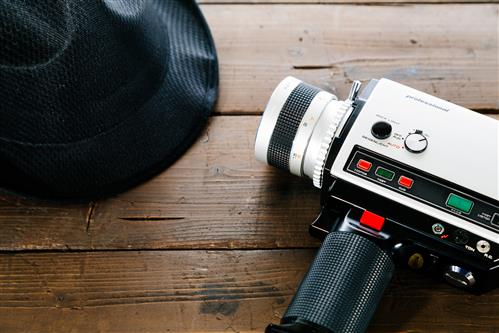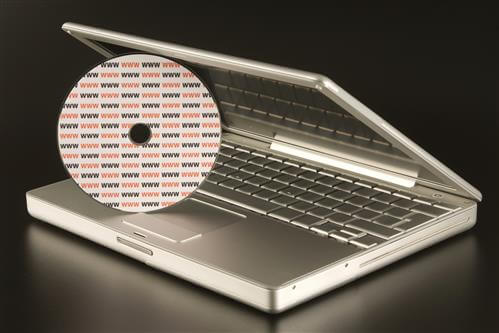Millions of Americans used 8mm and Super8 film during the 20th century to capture family reunions, Christmas vacations, and milestones in their children’s lives. Time and technology move on, and electronic media has provided a better format to preserve these memories for future generations. Film to DVD transfers can ensure your favorite home movies are preserved on a robust and accessible format.

DVDs are a widespread format that allows their owners to easily watch their favorite video content. DVDs have a number of advantages making them ideal for storing movies.
- Easy to copy – Making copies of DVDs is easy, allowing you to easily create duplicates for friends and other family members.
- Portable – You can easily transport DVDs from place to place, allowing you to watch them at friends and family members’ homes.
- Robust – If properly stored, DVDs can last for many years and not suffer the deterioration that film will experience over time. Some DVDs have an estimated shelf life of decades.
- Secure – Because they’re not in the cloud, you don’t have to worry about hackers gaining access to candid or private home movies.
Learning more about 8mm film and Super 8 film, and the process for converting these formats to DVDs, will help home movie enthusiasts make an informed decision regarding who to trust with their memories.
About 8mm Film
8mm film helped popularize home movies, providing for the first time a film format that was easy to use and affordable for middle class families. 8mm film was introduced in 1932 by Eastman Kodak, the same year the company introduced 16 mm film.

8mm film quickly became a popular format among consumers. 8 mm film was sold in 16 mm-wide form and flowed through movie cameras in two passes, one from either direction. The film was cut in two after processing. A later version of 8 mm film, called Straight 8, came already cut into the 8 mm width. Straight 8 reduced the amount of film stock needed, thus making it cheaper than traditional 8 mm film. Straight 8 also allowed film companies to shrink the size of cameras and projectors, making them more practical and affordable. Although the earliest versions of 8mm film were black and white, in the decades to come, color film became more widely available.

The contribution of 8mm film to the nascent home movie industry of the mid-20th century cannot be overstated, as this format gave the public its first widespread opportunity to record important milestones in their lives on a video format. Countless family events, professional gatherings, and other occasions from this era are preserved on 8 mm film.
Kodak stopped selling 8 mm film under its own name in the 1990s, but still manufactures the film and supplies it to independent film stores to sell. Manufacturers in Europe also continue to make black and white 8 mm film.
About Super 8 Film
Super 8 film supplanted 8 mm film as the technology of choice for making home movies in the latter half of the 20th century. Super 8 was originally introduced by Kodak in 1965 and quickly became the film stock of choice among home movie enthusiasts.

Super 8 film had a number of advantages over 8mm film. Super 8 film had smaller perforations than standard 8 mm film, which allowed the exposed area to be increased in size. The film also came in easy-to-load cartridges that users could load into their cameras in a manner of seconds, far quicker than they could load 8 mm film. Another key advantage of Super 8 film is that it has an oxide stripe for magnetically recording sound, allowing users to record both video and audio on this format. Sound recording film was discontinued in 1997 for environmental reasons.

Super 8 was the film format of choice for many years until the video cassette revolution of the 1980s. Many professional filmmakers continue to use Super 8 film to shoot television shows, commercials, and movies, as they prefer the visual effect Super 8 film can provide. The Super 8 format is also ideal as an inexpensive medium for recording traditional stop-motion and cel animation. Modern film and movie projects shot on Super 8 are usually transferred to video via a telecine process, similar to the process Just8mm.com uses to transfer film to DVDs.
The 8mm to DVD Process
Just8mm.com makes high quality conversions of 8mm and Super 8 film to DVD using proprietary hardware and processes. The company’s process ensures that all the quality of clients’ home movies is retained, and the transfer process can help improve some aspects of picture quality.
To begin the conversion process, technicians will backlight the client’s film with light from a low-wattage diffused source. This step protects the client’s film by eliminating super hot projector bulbs. Next, technicians use a device that images the surface of the film. This device acts as a large magnifying glass, allowing it to create an exact replication of the film on DVD without distortion, halos, or other flaws. Clients who transfer their 8mm and Super 8 film to DVD using Just8mm.com will get to see more of their footage (10 to 15 percent) because the company removes the film gates on its equipment.

Just8mm.com performs a number of services to ensure top quality color reproduction and resolution on its film to DVD transfers. Technicians will adjust exposure through film reels to help lighten and darken scenes as needed for improved viewing. Also, Just8mm.com’s discs are written at 10Mbps, a high data rate that eliminates flaws such as blocking, artifacts, and pixilation.
Just8mm.com’s film to DVD transfer process is superior to frame-by-frame transfer because, in that method, each frame is imaged separately, and then joined back together in computer editing software, creating a choppy, jerky video. In Just8mm.com’s transfer process, film is kept moving by spinning blades similar to a projector’s blades, thus allowing smooth, continuous action.
Just8mm.com’s transfer process is also superior to processes that try to transfer film to high definition formats. 8mm and Super 8 film are not high definition formats to begin with, so using high resolution equipment will not improve the picture quality. HD screen shapes also do not work well with 8mm or Super 8 transfers, as HD is a widescreen format, whereas 8mm and Super8 film is a 4:3 format. When transfer companies try to transfer 8mm or Super 8 to HD, they must either cut off the top and bottom of the film frame, or add color bars to the side of the screen.
When Just8mm.com transfers 8mm to DVD or transfers Super 8 to DVD, the company will format the DVD to have each reel of film listed as a separate chapter on the DVD menu. Brief descriptions can be added if the client wishes. Clients can easily navigate the menu to watch the film reel they want to see.
Transfer DVDs made by Just8mm.com will come with a custom label and a black plastic hard case. The company uses Verbatim DVDs, one of the most reliable products on the market. As a courtesy to clients, Just8mm.com also keeps a copy of the DVD in its archive to allow production of copies should clients’ DVDs become lost or destroyed.
For people who want to preserve their 8mm and Super 8 home movies for future generations to enjoy, working with Just8mm.com can help ensure these films don’t lose their quality in the transfer process. Contact Just8mm.com today to learn more about how to ensure your memories live on for years to come.

